 \\
\\Alisia Dragoon
The early days of GameArts were pretty interesting. While the developer became well known for their RPGs in the 90s, the first several years of the company were spent experimenting with a number of genres. During this time, one title to stand out was Alisia Dragoon. It was a platformer / shooter that never really caught on in either Japan or the West. When it originally was released, relatively few units were produced. Moreover, the game came out with little in the way of advertising. As the years have passed, though, it has acquired a bit of a cult following. It’s with good reason as the game is actually pretty good.GameArts didn’t make this game on their own. They did get some help unofficially from members of the anime studio Gainax, in particular Yoshimi Kanda. Interestingly, during very early discussions of making a game, some very different ideas emerged. Development was getting underway shortly after GameArts had released Thexder II: Fire Hawk, so the team was tossing around ideas for making a more straightforward shoot ‘em up with RPG elements added. However, it didn’t take long before they scrapped that and we got the fantasy-based platform shooter that we see today.
Alisia Dragoon follows the story of a young, powerful sorceress named Alisia. Her father had trapped away an evil being named Baldour in a cocoon, and locked it away in outer space. Years later, though, a cult emerged dedicated to this creature. The first thing they did was to kill Alisia’s father followed by retrieving Baldour so that they could awaken it. Now it’s up to Alisia to stop the cult and try to prevent this being from wrecking havoc on the world.
She has quite the journey ahead of her too, as the game has six stages, further divided into their own sub levels, making it quite long compared to a lot of other similar games of the period. Each stage is quite different from the one that preceeded. However, they do tend to adhere to various fantasy tropes in terms of settings more often than not. One thing that is nice about the levels is that they are quite big and offer a degree of exploration. They have the occasional hidden nook or cranny where Alisia can find power-ups for herself and the familiars that have joined her on her journey.
This brings us to one of the more unique gameplay aspects of the game. Alisia’s main attack allows her to launch lightning from her hands. Their strength diminishing over time depending on how long the player holds down the B button, though. She is also assisted by a number of creatures that fly alongside her, providing their own unique attacks. There are about a half-dozen of them ranging from little dragons to hawks to a fire elemental. They can slowly gain levels as the player collects talisman-like tokens hidden throughout the levels, making the familiars stronger.
These creatures can also die, though, if one isn’t careful, so watch out for that. Interestingly, the idea for adding these little guys to help Alisia originally emerged when the team was still thinking about making a shoot ‘em up. The familiars are intended to function similarly to options that would normally fly around one’s ship in those games adding extra firepower.
Such a feature is more than welcome because players are going to need all the help they can get given how challenging Alisia Dragoon is. The game throws a lot of enemies at the player, and sometimes they spawn nearby with very little warning. I wouldn’t go so far as to say that it’s unfair, though, as one quickly learns to assume where and when large groups of enemies will appear, and can prepare themselves accordingly. Given that Alisia’s attacks are charge-based, if one waits until their attack is ready to go at full power before diving into a large group of enemies, the baddies can be killed pretty fast. Nonetheless, the game does it’s best to try and stop Alisia from thwarting the cult’s plans. As such, be prepared for a challenge when diving into this game, especially when facing bosses. Those things do not go easy on players.
While they’re tough to beat, the bosses certainly look impressive. GameArts was experimenting with a new engine at the time. One of the big things that they were able to do with it was create some highly detailed bosses. The rest of the game looked quite good as well. The stages have a lot of detail to them, and the types of enemies are varied considerably. Alisia herself looks quite nice as well. She has a design style reminiscent of other games of the time starring a heroine such as Valis and El Viento.
Complementing the visuals is a very nice soundtrack. Each level has its own theme, and the melodies are quite pronounced from one another. It’s the sort of game where it doesn’t take long for tunes to get stuck in the player’s head.
Although the game didn’t turn a lot of heads when it first came out, people have warmed up to Alisia Dragoon quite a bit as time has passed. It looks very nice as far as Genesis / Mega Drive games go, and it provides quite a challenge. Powering up Alisia and her familiars while charging up her attacks in order to melt huge numbers of enemies all at once is quite satisfying.
Unfortunately, since not all that many copies were produced of the game, it does fetch a fairly high price beyond the usual nostalgia tax that has struck a number of classic games in recent years. For now, folks will need to cough up a fair chunk of change in order to get their mitts on Alisia Dragoon, unless it gets a digital re-release at some point. Nonetheless, it is worth considering for those who can afford it, as the game is quite good.
- IroIro
May 9, 2019
Related Articles:
- El Viento (Genesis / Mega Drive)
Genre: Action
Developer: GameArts
Publisher: GameArts
Released: 1992
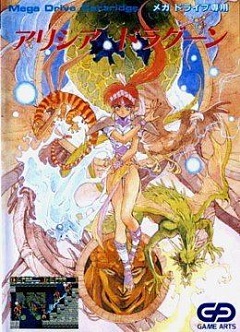
Box Art
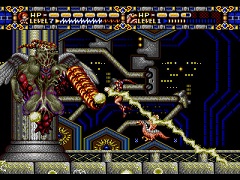
Fighting one of the game's bosses
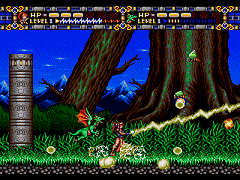
Wandering the forest stage
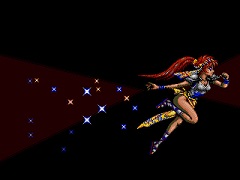
A very simple cutscene
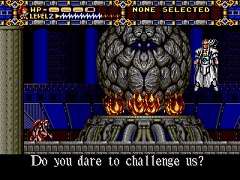
The big bad himself